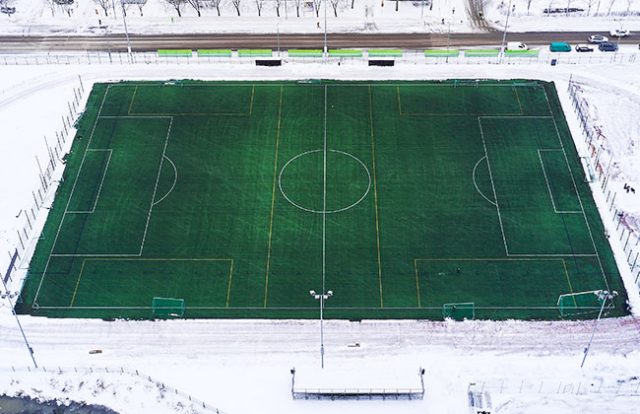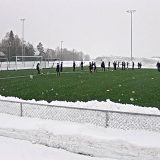 How Electric Field Heating Works
How Electric Field Heating Works
Ice and snow can pose a massive threat to major sporting events that are played on an outdoor field. If forced to play or practice, the conditions of the field can put the players at a major risk for injury.
On the other hand, cancelling a sporting event due to poor field conditions can cause significant financial strain, create scheduling conflicts, or even incur some fees related to the unplayability of the field.
The introduction of electric field heading is an affordable method to alleviate these challenges and offers a more environmentally friendly alternative to the conventional terrain heating methods. While the systems require professional installation, they aren’t complicated to understand and are quite simple to control.
Before the introduction of advanced electronic field heating, fields were traditionally heated by water pipes placed beneath the surface of the field.
The water would need to be heated by an external boiler house and then pumped through the pipes below the field to warm the area. When outside temperatures drop below zero, the water is at risk of freezing so anyone using these systems is forced to run the heating 24/7 to ensure the water does not freeze which results in very high gas and power bills during the colder seasons.
Here are the basics of how Alecs electric field heating works:
-
- Approximately 500 electrical ribbons are placed in intricate grid patterns within the soil below the field’s surface.
-
- The entire system is powered by an electrical cabinet placed outside the pitch.
-
- The thermal radiation produced by the cables creates heat that spreads evenly through the surrounding soil and rises up to warm the field.
-
- The heat warms the field in order to prevent ice and snow from accumulating and to melt any existing accumulation.
-
- Both the cables and sensors are placed with expert precision to ensure that the grass (natural or artificial) heats evenly and efficiently without causing any damage.
-
- Much like the heat in your home, the field’s temperature is regulated using thermostat sensors that are placed beneath the soil. The temperature can be set automatically or manually, only engaging the cables when the field’s temperature needs to be raised or maintained.
-
- The field is separated into individual sections so they can be controlled independently. This is done to save energy if a portion of the field has already melted from the sun, and it allows for easier maintenance.
-
- The temperature of the field can be controlled via software using a tablet, smartphone, PC, and laptop.
The system can be placed below natural and artificial grass as well as stone, gravel, and asphalt. Our systems have been designed to run on sustainably generated electric power that offers low energy consumption. Since the electric ribbons cannot freeze, they are only required to run as needed and offer up to a 25% gas bill savings compared to the traditional water powered method.
At Alecs Field Heating, we have provided dozens of fields with heating systems that make them playable year-round. If you want to invest in a reliable electric field heating system that guarantees the year-round playability of your field, contact us for an estimate today, and we’ll show you how quickly you’ll see a return on your investment.








